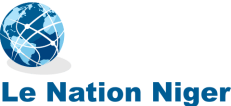Ethiopia, Kenya, and Somalia are facing the most severe food security crises in the world right now. Find out how USAID is working to save lives.
A Historic Drought and its Impacts
The worst drought in at least 70 years is devastating the Horn of Africa, a region encompassing the East African countries of Ethiopia, Somalia, and Kenya. This region has seen catastrophic drought before, most recently in 2016-2017, as well as in 2010-2011, when hundreds of thousands of people died of hunger.
What makes the current drought different, however, is its duration. While previous droughts were the result of two or three consecutive failed rainy seasons, the Horn recently experienced four back-to-back seasons of poor rainfall since late 2020–something that has never happened before. This means that for nearly two years now, herders have been losing livestock without even a moment of reprieve and farmers haven’t been able to produce anywhere near the amount of food needed to feed their families or their communities.
To complicate matters, many families are still reeling from the impact of the COVID-19 pandemic, desert locusts, and haven’t fully recovered from the 2016-2017 drought. Humanitarian actors warn that things could get even worse in the coming months, with an unprecedented fifth failed rainy season expected to take place in late 2022.
Now, more than 20 million people across Ethiopia, Kenya, and Somalia require emergency food assistance according to the UN; many communities lack access to reliable water sources; and a growing number of people are abandoning their homes to make long and dangerous journeys in search of food, water, and grazing lands. Conflict over increasingly scarce water resources is also on the rise, further endangering vulnerable populations.
USAID’s Humanitarian Response
As humanitarian needs continue to grow across the Horn, USAID is stepping up to save lives. USAID’s Bureau for Humanitarian Assistance has provided more than $1.8 billion in lifesaving humanitarian assistance this fiscal year alone, and more help is on the way. To meet growing needs, USAID partners are delivering food and water, treating malnourished children and pregnant women, repairing wells, and preventing disease outbreaks in vulnerable communities. Take a look at where and how USAID is helping.
ETHIOPIA
Dry weather has struck southern and southeastern Ethiopia’s Oromiya and Somali regions particularly hard. Overall, drought has affected 24.1 million people countrywide, 8.2 million of whom are facing water shortages. Water pumps, wells, and canals in many villages lie in a state of disrepair due to intense bouts of dry weather and conflict in recent years. People in these areas are having to choose between drinking water or using it for cooking or hygiene purposes. This often leads to deadly disease outbreaks in communities where immune systems have been ravaged by malnutrition.
USAID is working with more than 20 partners across Ethiopia to meet urgent humanitarian needs. In one project, USAID partner GOAL is constructing water points, pipelines, and storage tanks in Oromiya Region’s West Guji Zone–an area that has some of the worst water infrastructure in Ethiopia due to recent conflict. Meanwhile, our partner Save the Children is repairing village wells and installing rainwater harvesting systems at health centers in Ethiopia’s Oromiya and Somali regions.
KENYA
In Kenya, drought-related food and nutrition needs have reached startling levels in the northern counties of Marsabit, Mandera, and Wajir. Across the country, approximately 2.4 million livestock have died due to water shortages and drying pasture lands as of August. These animals were the primary source of income and food for many households. Crucially, they also produced the milk that is a key source of nutrition for many children. As of August 2022, nearly 885,000 children under the age of 5 required urgent treatment for malnutrition.
USAID and its partners are helping communities in arid and semi-arid areas across Kenya cope with the worst effects of the drought. In Mandera county, USAID partner the Rural Agency for Community Development and Assistance (RACIDA) is screening and treating children for malnutrition in some of the region’s most remote villages. The NGO is also providing immunizations and vitamin supplements to enable these children to fight off life-threatening illnesses. To boost incomes and production of nutritious dairy products RACIDA has also dewormed and vaccinated hundreds of thousands of livestock in recent months.
SOMALIA
More than 90 percent of Somalia is experiencing severe drought, but food security conditions are particularly dire in central and southern parts of the country, including the Bay Region. Between October and December of this year, 6.7 million people are expected to require lifesaving emergency food aid, and more than 300,000 are likely to face catastrophic levels of food insecurity–including people at risk of famine in Bay’s Buur Hakaba and Baidoa districts–unless emergency food assistance is expanded dramatically in the coming months.
Six USAID partners are delivering food to meet needs that haven’t been seen in Somalia in decades. In July alone, the UN World Food Program (WFP), with support from USAID and other donors, delivered food to 3.7 million people in Somalia. WFP is also scaling up its food programming at sites in Bay Region and near Mogadishu that have received tens of thousands of people fleeing drought in recent weeks.
This is not just another drought in the Horn of Africa. This is a perfect storm of factors resulting in catastrophic levels of humanitarian need and long-term protracted impacts. Persistent malnutrition, high vulnerability to droughts, and the effects of climate shocks are increasing the challenges faced by vulnerable communities across Ethiopia, Kenya, and Somalia. As the largest single humanitarian donor to the Horn of Africa, the United States has stepped up to meet the majority of immediate funding gaps to save lives. We are committed to the people living in the Horn, but we cannot solve this crisis alone. We now need other donors to step up and join us in alleviating suffering for millions of people and prevent more lives from being lost.
Source: US Agency for International Development
